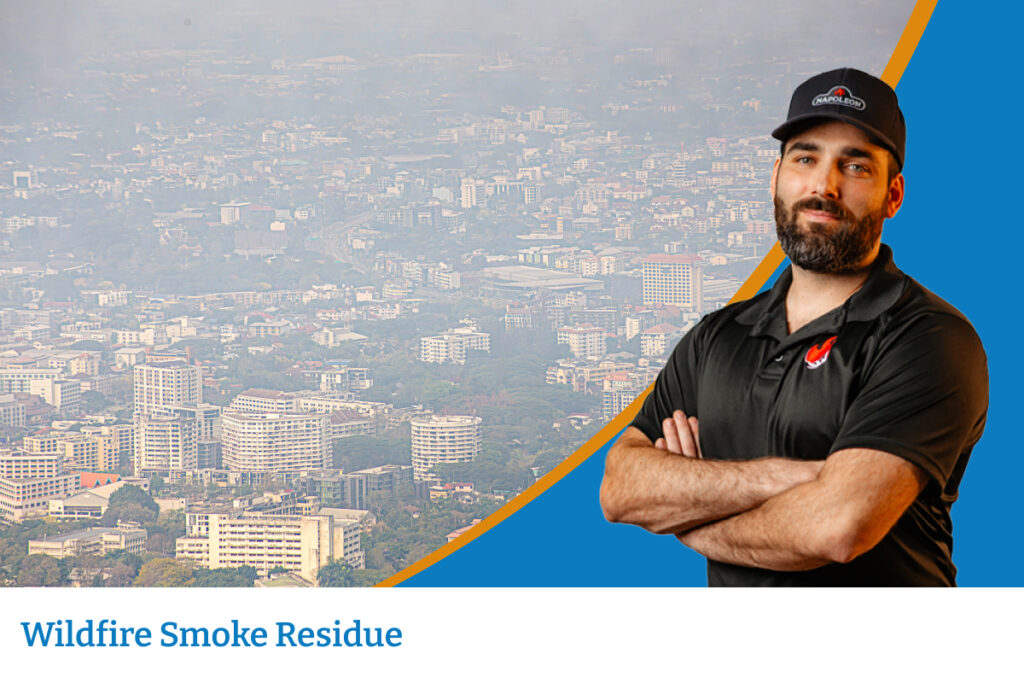Is It Still in Your Ducts?
The 2025 wildfire season left much of Western Canada, including Winnipeg, blanketed in thick smoke for weeks. While the immediate concern was outdoor air quality, many homeowners are now wondering whether that wildfire smoke made its way into their homes—and more importantly, if it’s still lingering inside. If your HVAC system was running during those smoke events, there’s a good chance fine particulate matter settled in your ductwork. Professional duct cleaning in Winnipeg can help remove smoke residue, improve air quality, and support a healthier home environment.
How Wildfire Smoke Gets Trapped Indoors
Wildfire smoke is made up of gases and extremely small particles. These fine particles can easily enter homes through open windows, doors, or ventilation systems—especially if your HVAC system was running continuously during smoke advisories. Once inside, these particles settle on surfaces or get drawn into your ductwork, where they’re recirculated every time your heating or cooling system turns on.
Unlike dust or pollen, wildfire smoke residue is especially difficult to detect with the naked eye. It doesn’t always cause visible buildup, but it can carry a distinct burnt smell and contribute to respiratory irritation, headaches, or worsened asthma symptoms. Smoke particles may also cling to HVAC filters, coils, and duct interiors, reducing the efficiency of your system and degrading air quality long after the wildfire has passed.
Signs Smoke Residue May Still Be in Your Ducts
Months after a major smoke event, you might still notice certain signs that indicate leftover contamination. A persistent smoky or burnt odour when the HVAC system is running is a strong indicator. You might also experience respiratory discomfort or allergy-like symptoms indoors, even when outdoor air quality is good. In some cases, there may be a faint layer of black or grey dust on vent covers, or the air might feel heavier or less fresh than usual.
If you experienced extended exposure to wildfire smoke in 2025 and haven’t had your ductwork inspected or cleaned since, it’s worth considering a professional evaluation.
The Role of Duct Cleaning After Smoke Events
Professional duct cleaning involves the removal of dust, allergens, and other contaminants from your HVAC system, including vents, returns, and main duct lines. After a smoke event, this process becomes even more important, as it can help eliminate fine particles that standard HVAC filters may have missed.
By clearing out smoke residue, duct cleaning can restore better airflow, remove lingering odours, and reduce the recirculation of harmful particulates. This is especially beneficial for households with children, seniors, or individuals with respiratory conditions like asthma or COPD (Chronic Obstructive Pulmonary Disease).
Adding HEPA Filtration for Ongoing Protection
While duct cleaning addresses contamination already present in your system, upgrading your HVAC with HEPA (High-Efficiency Particulate Air) filtration can help prevent future issues. HEPA filters are capable of capturing 99.97% of particles down to 0.3 microns, making them highly effective at trapping smoke, pollen, dust, and other airborne pollutants.
Installing a HEPA filter add-on or air scrubber can offer long-term peace of mind, especially if wildfire smoke becomes a more regular seasonal threat. These systems work alongside your HVAC to continuously clean the air circulating in your home and are a smart investment for families focused on health and indoor air quality.
For more on air filtration standards and health impacts from smoke exposure, Health Canada provides guidelines on how to protect yourself during wildfire events.
Why Smoke Residue Persists
Even though the air may seem clear now, smoke residue doesn’t simply disappear once a fire is out. Fine particles settle inside ductwork and other hidden areas, especially if your system was circulating air during smoke events. Over time, these particles can become embedded in dust layers or adhere to damp surfaces, making them difficult to remove without specialized equipment.
Additionally, when your HVAC system turns on, it can loosen and redistribute these particles into your living space. This ongoing exposure, even in low levels, can contribute to indoor air pollution and may continue to trigger symptoms or odours.
Schedule a Post-Wildfire Duct Cleaning
If your home was affected by the 2025 wildfire smoke, now is a good time to consider a thorough duct inspection and cleaning. Removing smoke residue helps restore clean air circulation and supports a safer, healthier home environment. At Winnipeg Duct Cleaning, we use powerful vacuums and advanced equipment to eliminate built-up particles and improve the overall performance of your HVAC system.
Whether you’re dealing with smoke-related odours or reduced airflow, our experienced team is ready to help.
